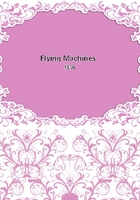
第8章
The figures given also include the expense of rudders, but the details of these have not been included as the glider is really complete without them. Some of the best flights the writer ever saw were made by Mr. A. M. Herring in a glider without a rudder, and yet there can be no doubt that a rudder, properly proportioned and placed, especially a rear rudder, is of great value to the aviator as it keeps the machine with its head to the wind, which is the only safe position for a novice. For initial educational purposes, however, a rudder is not essential as the glides will, or should, be made on level ground, in moderate, steady wind currents, and at a modest elevation. The addition of a rudder, therefore, may well be left until the aviator has become reasonably expert in the management of his machine.
Putting the Machine Together.
Having obtained the necessary material, the first move is to have the rib pieces steamed and curved. This curve may be slight, about 2 inches for the 4 feet. While this is being done the other parts should be carefully rounded so the square edges will be taken off. This may be done with sand paper. Next apply a coat of shellac, and when dry rub it down thoroughly with fine sand paper. When the ribs are curved treat them in the same way.
Lay two of the long horizontal frame pieces on the floor 3 feet apart. Between these place six of the strut pieces. Put one at each end, and each 4 1/2 feet put another, leaving a 2-foot space in the center. This will give you four struts 4 1/2 feet apart, and two in the center 2 feet apart, as shown in the illustration. This makes five rectangles. Be sure that the points of contact are perfect, and that the struts are exactly at right angles with the horizontal frames. This is a most important feature because if your frame "skews" or twists you cannot keep it straight in the air. Now glue the ends of the struts to the frame pieces, using plenty of glue, and nail on strips that will hold the frame in place while the glue is drying. The next day lash the joints together firmly with the shoe thread, winding it as you would to mend a broken gun stock, and over each layer put a coating of glue. This done, the other frame pieces and struts may be treated in the same way, and you will thus get the foundations for the two planes.
Another Way of Placing Struts.
In the machines built for professional use a stronger and more certain form of construction is desired. This is secured by the placing the struts for the lower plane under the frame piece, and those for the upper plane over it, allowing them in each instance to come out flush with the outer edges of the frame pieces. They are then securely fastened with a tie plate or clamp which passes over the end of the strut and is bound firmly against the surface of the frame piece by the eye bolts of the stanchion sockets.
Placing the Rib Pieces.
Take one of the frames and place on it the ribs, with the arched side up, letting one end of the ribs come flush with the front edge of the forward frame, and the other end projecting about a foot beyond the rear frame.
The manner of fastening the ribs to the frame pieces is optional. In some cases they are lashed with shoe thread, and in others clamped with a metal clamp fastened with 1/2-inch wood screws. Where clamps and screws are used care should be taken to make slight holes in the wood with an awl before starting the screws so as to lessen any tendency to split the wood. On the top frame, twenty-one ribs placed one foot apart will be required. On the lower frame, because of the opening left for the operator's body, you will need only twenty.
Joining the Two Frames.
The two frames must now be joined together. For this you will need twenty-four aluminum or iron sockets which may be purchased at a foundry or hardware shop.
These sockets, as the name implies, provide a receptacle in which the end of a stanchion is firmly held, and have flanges with holes for eye-bolts which hold them firmly to the frame pieces, and also serve to hold the guy wires.
In addition to these eye-bolt holes there are two others through which screws are fastened into the frame pieces.
On the front frame piece of the bottom plane place six sockets, beginning at the end of the frame, and locating them exactly opposite the struts. Screw the sockets into position with wood screws, and then put the eye-bolts in place. Repeat the operation on the rear frame. Next put the sockets for the upper plane frame in place.